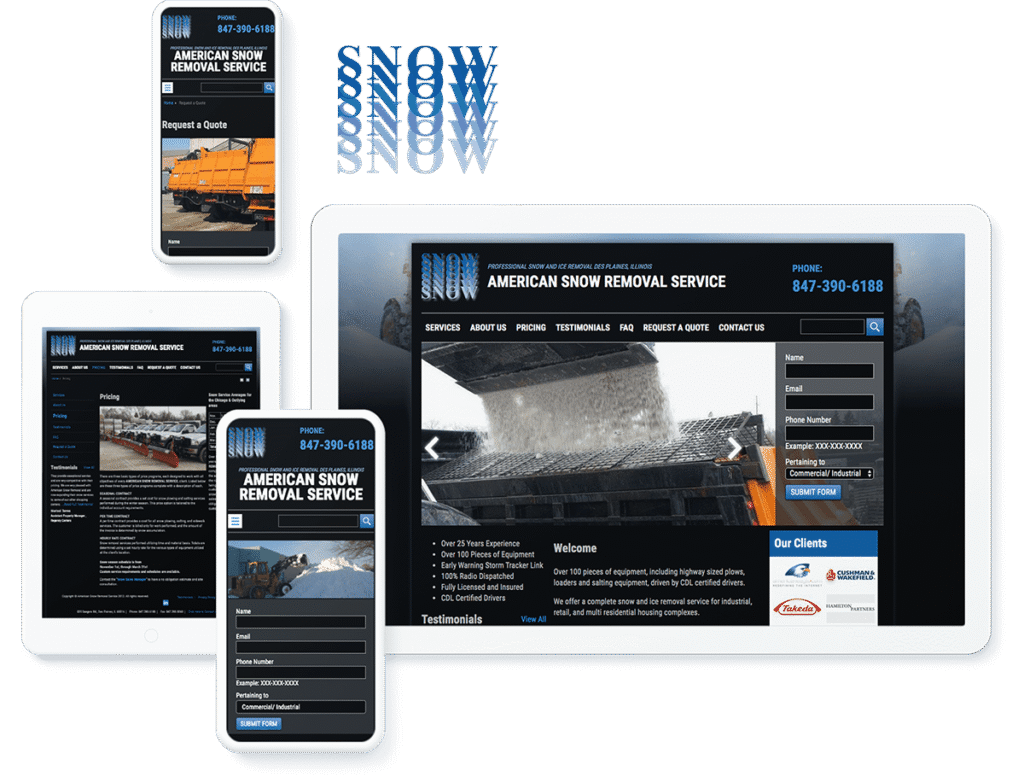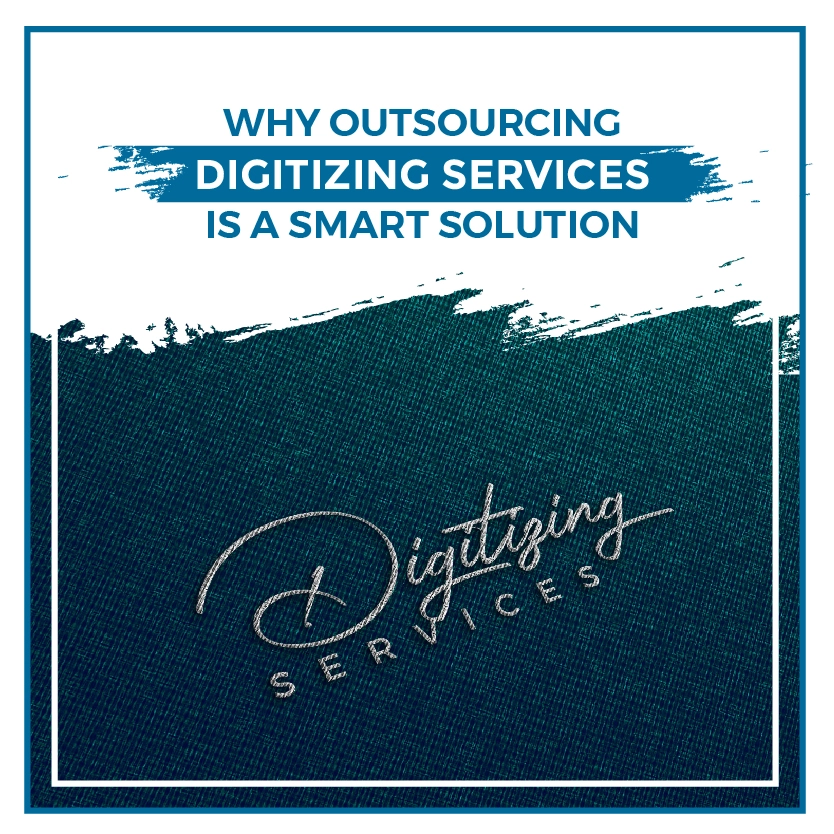Technology
The Hidden Cost of Ugly: How Bad Design Kills Trust (and How Professional Web Design in Columbia, SC Saves It)

I’ve been in this business for close to two decades now, and if there’s one thing that still makes me want to scream into a throw pillow gently, it’s the persistent underestimation of web design. Some folks still think design is just about choosing fonts and adding a slider at the top that makes you seasick. And look — I get it. When you’re a business owner juggling 19 things before your second cup of coffee, you don’t wake up thinking, “What’s the emotional tone of my hero image today?”
But here’s the kicker: the first 0.05 seconds of someone visiting your site is all about design. Not the content. Not the price. Just pure visual judgment. According to a global study published in the Journal of Behavior & Information Technology, users form an opinion about your site in 50 milliseconds. That’s faster than the average human blink. And once that trust is lost — say, because your site looks like it time-traveled from 2009 — regaining it will be good luck.
In Columbia, South Carolina, I’ve seen it happen again and again. A poor website often hinders a great business. And it’s not just an aesthetic problem — it’s a trust problem. That’s where Web Design Columbia (WDC) comes in, armed with pixel-perfect judgment and a deep understanding of what makes people click, convert, and come back.
The Science of Distrust: What Bad Design Signals to Real Humans
Let’s get into the weeds for a second. When your website loads and visitors see Comic Sans headlines, images that don’t scale on mobile, or navigation menus with more items than a Cheesecake Factory menu, their subconscious starts firing off warning signals. These warning signals are not just guesses. They’re rooted in psychological studies. A study from Stanford’s Persuasive Technology Lab found that 75% of users make judgments about a company’s credibility based solely on its web design.
And yet, I still get calls from folks asking, “Can’t I just use the free version of a template and call it a day?” You can, but you’ll end up paying in a currency called lost trust.
Ironically, some businesses in Columbia don’t realize they’re sending the digital equivalent of showing up to a job interview in stained pajamas. The worst part? Many people are unaware of it because their competitors’ sites are equally outdated. However, customers notice, especially in a world where big brands are cultivating users to expect seamless, aesthetically pleasing experiences.
Professional Web Design in Columbia, SC: It’s a Trust-Building Machine
This is why professional web design in Columbia, SC, is no longer a luxury or some hipster aesthetic obsession. It’s table stakes. At WDC, we’ve built enough websites to know the nuances that can make or break a visitor’s experience, especially when you’re trying to capture attention in less time than it takes to skip a YouTube ad.
One of our recent clients — a law firm with impeccable credentials but a clunky, outdated website — saw a 42% drop in bounce rate within the first month of launch after we gave their digital presence a much-needed refresh. We didn’t even overhaul the content—just the structure, layout, typography, and loading speed. The design told the story of professionalism before anyone had a chance to read their about page.
And we didn’t charge a Silicon Valley premium for it, either.
The Global Benchmark: What Design Trends Are Telling Us
Let’s zoom out. Globally, design is in flux. Websites are becoming more adaptive, emotionally resonant, and AI-friendly. Google’s shift to Search Generative Experience (SGE) and the rise of multimodal AI tools like ChatGPT-4o mean your site doesn’t just have to look good — it needs to be structured semantically, optimized for machine interpretation, and lightning-fast.
And here’s a hot fact that should make any business owner sit up straighter: according to Adobe’s global design trends report, 38% of people will stop engaging with a website if the layout is unattractive. That’s not a gentle nudge — that’s an exit.
As someone who’s seen design phases come and go — from brutalist layouts to parallax scrolling, to the current obsession with neumorphism (which, by the way, isn’t very accessible) — I can tell you this: the trend that never goes out of style is clarity. Professional design is about conveying confidence without appearing overly polished. In Columbia, we design for the scroll, not the show-off.
What Big Brands Get Right (and Sometimes So Wrong)

Let’s look at Apple for a second. Their design philosophy is worshipped worldwide. But even they slip. Remember the Butterfly keyboard fiasco? Sleek and minimal, yes — but functional? Not quite. The web has its own version of this. Many well-funded startups have websites that win design awards but confuse users to no end. Uber redesigned their entire brand in 2018 and lost so much recognition that it had to walk it back in 2021.
And that’s another edge of professional web design in Columbia, SC — we aren’t designing to win design awards in Berlin. We’re planning to help Columbia businesses connect with real people who don’t care if your button shadows are “brutalist” or “glassmorphic” — they just want to find what they came for.
WDC’s approach is grounded in this practicality. We use tools like Figma and Adobe Firefly not just for visual polish but for innovative collaboration, accessibility checks, and performance forecasting. And we’re constantly testing in real environments — not just a designer’s 5K monitor.
The Downsides of Going DIY (or Trusting That Cousin Who “Knows Wix”)
Now, don’t get me wrong, platforms like Wix and Squarespace have democratized web design in a big way — and that’s great. But their limitations become clear fast, especially for growing businesses. You end up boxed in, SEO-handicapped, and constantly hitting a ceiling when it comes to performance.
Global complaints about DIY platforms often center on code bloat, poor SEO control, and design limitations that force every website into a cookie-cutter mold. A report from Search Engine Journal notes that websites built on drag-and-drop builders are often 40–60% slower than their optimized custom counterparts.
In Columbia, I’ve had more than one business come to us after months of frustration with a templated builder. They saved a few hundred upfront but lost thousands in customer confusion and digital invisibility.
That’s the gap professional web design in Columbia, SC fills — creating a tailored, optimized, fast-loading experience that doesn’t rely on “hope” as a strategy.
Why Design Is a Feeling Before It’s a Function

I’ll wrap this first half with a truth that’s taken me almost 20 years to grasp fully: people don’t just interact with websites — they feel them. A clean layout isn’t just easier on the eyes; it tells your customer, “We’ve got our act together.” A slow, cluttered site says, “We may cut corners.”
The beauty of Web Design Columbia (WDC) lies in our ability to design for both the logic and the vibe. Our sites don’t just pass SEO audits and speed tests. They pass the most critical test of all: Would you trust this business with your money?
And when someone finds us through a branded link like webdesigncolumbia.us, they’re often surprised by two things: how affordable our prices are, and how much thought we put into every pixel.
Emotional Design: Why It’s Not Just for Luxury Brands Anymore
Somewhere along the way, emotional design became a buzzword — a sort of fancy way to describe websites that made people feel “warm fuzzies.” But here’s the truth: emotional design is unavoidable. Every website evokes an emotion, even if that emotion is frustration, confusion, or “Where’s the damn contact button?”
Big brands like Airbnb and Duolingo invest millions in enhancing their emotional user experience (UX). Not because it’s cute, but because it works. Airbnb’s soft color palette, human-centric photography, and inviting microcopy (“Welcome home”) increase booking trust, which in turn boosts conversions. Duolingo’s little green owl has been meme’d into oblivion, but behind the scenes, their user flows are rooted in pure behavioral psychology.
At Web Design Columbia, we’ve seen firsthand how professional web design in Columbia, SC, can incorporate emotional UX without adopting the entire Silicon Valley approach. A local wellness brand we worked with wanted more user engagement but had a cold, technical design language. We rebuilt their interface to feel like a conversation, not a lecture. Sign-ups increased by 73% over a six-week period. Turns out, feelings matter — even in form fields.
Mobile-First Isn’t Optional Anymore — But It Still Gets Screwed Up
Now let’s talk about mobile. The phrase “mobile-first” is like avocado toast at this point — everyone says they like it, but a lot of people are still getting it wrong.
Globally, over 58% of web traffic is generated from mobile devices, according to Statista. In the U.S., mobile users expect fast-loading, finger-friendly, intuitive designs. But what do they often get instead? Desktop layouts shrunk down to the size of a Triscuit.
I once audited a Columbia-based restaurant website (not a client yet, don’t worry) that had a scrolling image slider on mobile, with no text, no call to action, and loading times so slow you could marinate a steak while waiting. That’s not mobile-first. That’s mobile-forgotten.
Professional web design in Columbia, SC, isn’t just about responsive breakpoints — it’s about designing for the smallest screen first, then scaling up. At WDC, we prototype in mobile view to ensure essential content never gets buried. We also factor in tap targets, page weight, and whether grandma on her Galaxy A13 can find your hours without rage-quitting.
And no, mobile optimization isn’t expensive if you start smart. It’s costly when you ignore it and lose business.
The Tools That Shape the Invisible
Behind every slick website is a suite of tools most users will never see, but they make all the difference. Let’s break it down, no bullet lists needed.
We use Figma as if it were a religion. Not because it’s trendy, but because real-time collaboration reduces project misfires by about 60%. Designers, developers, and clients stay on the same page — literally.
For asset generation and ideation, Adobe Firefly has become surprisingly helpful. While generative design still has rough edges (AI still struggles with fingers and footers), Firefly helps us move faster, especially when clients don’t have high-res imagery or specific brand guidelines.
Then there’s PageSpeed Insights, Cloudflare, and the invisible frameworks that control how fast and secure your site feels. Most of our Columbia-based projects run on performance-optimized stacks, and we fine-tune everything to the last byte. Speed matters. People bail after just 3 seconds of load time — and not just millennials. Grandma’s not waiting either.
But here’s where it gets even more interesting: some tools hurt more than they help. Tools like Elementor or Divi, popular with DIYers, often inject bloated code and unnecessary CSS files. Globally, developers complain that these platforms prioritize short-term ease over long-term speed issues.
At WDC, we ditch those shortcuts. We know what makes a site fast, secure, and search-ready. And no, we’re not keeping those secrets — you can ask us anything. We like educated clients.
Real-World Optimizations You Never Think About (But Should)
Let’s examine a few subtle design optimizations that may seem small but have a significant impact.
We once increased engagement for a Columbia-based tutoring service simply by adjusting the typography hierarchy, making the call-to-action bold, and eliminating unnecessary font styles. No redesign, no new colors. Just better focus.
Another time, we helped a South Carolina landscaping company increase quote requests by 30% simply by moving the phone number above the fold and making it tap-to-call on mobile. Sounds obvious? It wasn’t — they’d been missing out on dozens of leads every month.
Professional web design in Columbia, SC, when done right, isn’t flashy — it’s thoughtful. These changes are invisible to most users, but they reduce friction, increase trust, and enable businesses to grow without needing to seek attention constantly.
The Real Cost of Cutting Corners
Here’s the painful part no one wants to hear: bad design costs. And not just in SEO rankings or bounce rates.
A 2023 Forrester report found that every dollar invested in UX yields a $100 return. That’s not a typo. The math is often hidden in reduced support calls, increased conversions, and brand equity that makes someone choose you over the guy down the street.
Yet in Columbia, I still meet smart business owners who think a $300 site from their nephew with a YouTube diploma will “do the trick.” It won’t. You’ll eventually call a professional — and probably spend double fixing what should’ve been done right the first time.
WDC isn’t the cheapest agency in the country — but we’re far from the most expensive. What we offer is nearly 20 years of hard-won experience, local understanding, and a process that’s made to be painless. We don’t outsource. We don’t overpromise. And we never ghost you after the final invoice is sent.
We just deliver professional web design in Columbia, SC that works like it should — fast, secure, elegant, and rooted in reality.
Websites Are Quiet Salespeople — Train Them Well
Your website is your best employee. It works 24/7, doesn’t call in sick, and greets every visitor with a (hopefully) polished smile. But like any employee, it only performs well if you train it right.
At Web Design Columbia, we don’t just design websites. We shape digital ambassadors — quiet, tireless extensions of your brand that make great first impressions and even better second ones.
If you’re still relying on outdated templates, slow builders, or a site that “kind of works,” I encourage you to rethink your approach. Start small, even. Get an audit. Ask hard questions. And visit us at webdesigncolumbia.us when you’re ready.
Because when it comes to trust, you only get one shot, and your design fires the first bullet.
Technology
How to Speak to Someone at Norton Support USA Contact Numbers: A Step-by-Step Guide

Speak to Someone at Norton USA Contact Numbers 1-888-768-2981 a Detailed Step by Step Guide
Navigating Norton plans +1-888-768-2981 can sometimes require a little extra assistance. Whether you’re adjusting a Norton subscription, clarifying billing details, or seeking a refund, speaking with a live person at Norton can often be the most efficient way to resolve your concerns. This guide outlines +1-888-768-2981 how to reach a live Norton agent via phone, chat, and other methods, offering tips to minimize wait times and ensure a smooth support experience.
Why Speak with a Live Norton Agent?
While automated systems can handle many basic inquiries, certain situations often necessitate human interaction. These include:
- Subscription issues: Changes or cancellations often require personalized assistance to manage or secure refunds.
- Complex account setups: Multi-device setups or special security configurations are best handled by a live agent.
- Refunds and billing issues: Navigating refund processes or billing disputes is often easier with direct communication.
- Technical issues: Software errors, installation problems, or account lockouts often need live troubleshooting.
- Clarity and peace of mind: Sometimes, simply speaking with a live person can provide reassurance and clear answers.
How to Contact Norton Customer Service:
Norton +1-888-768-2981 offers multiple avenues for connecting with their support team:
Phone Support: The Direct Line
Calling Norton +1-888-768-2981 customer service hotline is often the fastest way to reach a live agent. While you may encounter automated prompts, persistence and clear articulation of your needs can quickly connect you to a real person.
Live Chat: Convenient Online Assistance
Norton’s live chat feature is ideal for those who prefer text-based communication. Accessible via the “Support” or “Contact Us” section on the Norton website, it allows real-time help from an agent.
Mobile App Support: Help on the Go
Using the Norton mobile app, users can access chat or call support directly, offering a fast and portable way to solve issues.
Email Support: For Less Urgent Matters
You can email Norton for inquiries that aren’t time-sensitive. Expect a longer response time than live chat or phone.
Social Media: Public Inquiries (Use Carefully)
Norton is active on platforms like Twitter and Facebook. While you can message them, don’t share private info like account details. This method is better for general updates or announcements.
Tips for Connecting with a Live Agent via Phone:
- Be prepared: Have your Norton account email, product key, or subscription ID ready.
- Be clear: Briefly and clearly explain your issue.
- Be patient: Wait times may vary, especially during busy hours.
- Use prompts wisely: Follow the phone menu or say “representative” to bypass.
- Repeat if needed: Say “agent” or press “0” multiple times if necessary.
International Callers:
For users outside the U.S., the Norton number remains the same:
- Norton UK: +1-888-768-2981
- Norton en Español: +1-888-768-2981
- Norton Australia: +1-888-768-2981
Common Norton Customer Service Inquiries:
- Subscription changes/cancellations
- Software installation issues
- Billing or renewal disputes
- Account recovery/password resets
- Product upgrades and support for multiple devices
By using the above contact options and tips, you can quickly speak with a live Norton agent +1-888-768-2981 to address your issue efficiently.
The 1–800 +1-888-768-2981 Phone Number for Norton Support
You can call Norton customer service toll-free at +1-888-768-2981 for any issue related to subscriptions, renewals, refunds, or installations. For fast service, have your account info or Norton product key ready.
Use the Norton Help Centre +1-888-768-2981
Norton’s online Help Center is full of resources. It’s great for self-service troubleshooting or minor questions.
Steps to use the Help Center:
- Go to Norton’s Support page +1-888-768-2981
- Select a relevant topic (billing, security, downloads, etc.)
- Browse articles or click “Contact Us” to access chat or call support.
Live Chat with Norton
Want faster help than phone? Try Norton’s live chat.
- Visit Norton’s official site +1-888-768-2981
- Click “Support” then “Chat with Us”
- Explain your issue—an agent will respond in real-time
Reach Out via Social Media
Send a message to Norton’s verified social media profiles like Twitter or Facebook. While response time may vary, it’s a viable option for non-urgent issues or status updates.
Tip: Include your subscription ID and detailed issue (without sharing sensitive data publicly).
Use the Norton Contact Form +1-888-768-2981
Not in a rush? Fill out Norton’s official contact form via their “Contact Us” page. Include:
- Your Norton product and subscription details
- Clear explanation of your issue
- Screenshots (if applicable)
- Norton account email
A representative typically responds within 24–48 hours.
Conclusion
Getting in touch with Norton +1-888-768-2981 from the USA or abroad doesn’t have to be difficult. Whether you call, chat, or email, using the right method based on urgency saves time and gets results.
Summary – Contact Norton Customer Service:
- Call: +1-888-768-2981 (24/7 toll-free support)
- Live Chat: Via website or mobile app
- Email: Through their contact form for written support
- Social Media: For general queries and updates
- Help Center: For FAQs and guides
Whether it’s dealing with technical errors, billing issues, or managing your security settings, speaking with a Norton live representative +1-888-768-2981 can help resolve your concern quickly and clearly.
Technology
TRB AKD10 Best Paper Award: Recognizing Excellence in Transportation Research

Introduction
The Transportation Research Board (TRB) continues to champion groundbreaking research through its prestigious committee awards, with the AKD10 Best Paper Award standing as a testament to innovation in transportation studies. This annual recognition celebrates researchers who push boundaries and contribute meaningful insights to the field.
Each year, the TRB AKD10 committee evaluates dozens of submissions, seeking work that demonstrates exceptional methodology, significant findings, and practical applications. The award represents more than academic achievement it highlights research that can shape transportation policy, improve infrastructure planning, and enhance mobility solutions for communities worldwide.
Understanding the significance of this award provides valuable insight into current transportation research trends and the evolving challenges facing our mobility systems.
Understanding the TRB AKD10 Committee
The Transportation Research Board’s AKD10 committee operates within TRB’s extensive network of standing committees, each focused on specific aspects of transportation research. These committees serve as the backbone of TRB’s mission to advance transportation knowledge through rigorous peer review and collaborative research initiatives.
AKD10 committees typically focus on specialized transportation topics, ranging from freight logistics and urban planning to emerging technologies and sustainable transportation solutions. Committee members include academics, industry professionals, and government researchers who bring diverse perspectives to the evaluation process.
The committee’s role extends beyond award selection. Members facilitate knowledge exchange, identify research gaps, and foster collaboration between institutions. This comprehensive approach ensures that recognized research addresses real-world transportation challenges while maintaining the highest academic standards.
The Significance of the Best Paper Award
The TRB AKD10 Best Paper Award carries substantial weight within the transportation research community. Recipients gain recognition from peers, increased visibility for their work, and opportunities for further collaboration and funding.
This award specifically targets papers that demonstrate innovative approaches to transportation challenges. Evaluation criteria typically include research originality, methodological rigor, practical applicability, and potential impact on transportation practice or policy.
Winning papers often introduce new analytical methods, present novel findings about transportation behavior, or propose innovative solutions to persistent mobility problems. The recognition helps bridge the gap between academic research and practical transportation planning, ensuring that valuable insights reach practitioners and policymakers.
Spotlight on the Winning Research
While specific details about the current year’s winning paper may vary, TRB AKD10 Best Paper Award recipients typically represent cutting-edge research addressing contemporary transportation challenges. These studies often employ advanced analytical techniques, utilize large-scale datasets, or explore emerging transportation technologies.
Previous winners have tackled diverse topics including traffic flow optimization, public transit accessibility, freight movement efficiency, and the integration of autonomous vehicles into existing transportation networks. The research methodologies range from complex mathematical modeling to comprehensive field studies and innovative data collection techniques.
The selected papers demonstrate how academic research can directly inform transportation decision-making. Authors typically combine theoretical frameworks with practical applications, ensuring their findings can guide real-world transportation improvements.
Impact and Implications of Award-Winning Research
Research recognized by the TRB AKD10 Best Paper Award often influences transportation planning practices, policy development, and future research directions. These studies provide evidence-based solutions to complex mobility challenges and introduce new perspectives on persistent transportation problems.
The implications extend beyond academic circles. Transportation agencies, consulting firms, and technology companies frequently reference award-winning research when developing new projects, implementing policy changes, or creating innovative transportation solutions.
Furthermore, recognized research often sparks additional studies, creating research clusters around important transportation topics. This multiplier effect amplifies the initial research impact and contributes to the broader advancement of transportation knowledge.
Insights from the Transportation Research Community
The TRB AKD10 Best Paper Award reflects broader trends in transportation research, highlighting emerging priorities and methodological innovations. Committee members and research evaluators often note the increasing sophistication of analytical techniques and the growing emphasis on interdisciplinary approaches.
Recent trends show increased focus on sustainability, equity, and technology integration in transportation research. Award-winning papers increasingly address environmental impacts, social justice considerations, and the role of emerging technologies in transportation systems.
The evaluation process also reveals the transportation community’s commitment to rigorous peer review and collaborative research development. Committee members provide detailed feedback that helps authors refine their work and contributes to overall research quality improvement.
Frequently Asked Questions
What makes a paper eligible for the TRB AKD10 Best Paper Award?
Papers must typically be presented at TRB Annual Meetings and fall within the AKD10 committee’s specific focus area. They should demonstrate original research, rigorous methodology, and significant contributions to transportation knowledge.
How are winning papers selected?
Committee members evaluate submissions based on established criteria including research quality, innovation, practical relevance, and potential impact. The selection process involves multiple rounds of peer review and committee discussion.
Can international researchers submit papers for consideration?
Yes, TRB welcomes submissions from researchers worldwide, provided the research meets committee standards and addresses relevant transportation topics.
What benefits do award winners receive?
Winners receive formal recognition at TRB Annual Meetings, increased visibility within the transportation research community, and potential opportunities for collaboration and follow-up research.
How can researchers improve their chances of award consideration?
Focus on addressing significant transportation challenges, employ rigorous methodology, demonstrate practical applications, and clearly communicate research contributions and implications.
Advancing Transportation Knowledge Through Recognition
The TRB AKD10 Best Paper Award represents more than individual achievement it symbolizes the transportation research community’s commitment to excellence and innovation. By recognizing outstanding research, the award encourages continued investigation into critical transportation challenges and promotes the application of research findings to real-world problems.
For researchers, the award provides motivation to pursue high-impact studies that can influence transportation practice. For practitioners, award-winning research offers evidence-based solutions and innovative approaches to persistent mobility challenges.
As transportation systems continue evolving with new technologies, changing demographics, and environmental concerns, awards like the TRB AKD10 Best Paper Award ensure that research keeps pace with these developments and continues providing valuable insights for creating more efficient, sustainable, and equitable transportation systems.
Technology
Everything You Need to Know About Mosnode: A Complete Guide

Introduction
Mosnode is rapidly becoming an essential tool for developers and businesses looking to streamline their node management processes. Whether you’re managing a single application or orchestrating complex distributed systems, understanding how to leverage mosnode effectively can significantly impact your project’s success.
This comprehensive guide will walk you through everything you need to know about mosnode, from its core functionality to advanced implementation strategies. By the end of this post, you’ll have the knowledge and confidence to integrate mosnode into your workflow and maximize its potential for your specific use case.
What Is Mosnode and Why Does It Matter?
Mosnode is a powerful node management platform designed to simplify the deployment, monitoring, and scaling of distributed applications. At its core, mosnode provides developers with a centralized interface for managing multiple nodes across different environments, whether they’re running locally, in the cloud, or in hybrid configurations.
The platform emerged from the growing need to handle increasingly complex distributed systems without overwhelming development teams with management overhead. Traditional node management often requires juggling multiple tools, monitoring systems, and deployment scripts. Mosnode consolidates these functions into a single, intuitive platform.
What sets mosnode apart is its focus on automation and intelligent resource allocation. Rather than requiring manual intervention for routine tasks, the platform learns from your usage patterns and automatically optimizes node performance, resource distribution, and scaling decisions.
Key Features That Make Mosnode Stand Out
Automated Node Discovery and Registration
One of mosnode’s most powerful features is its ability to automatically discover and register new nodes as they come online. This eliminates the tedious manual process of configuring each node individually and ensures that your system maintains an accurate, real-time inventory of available resources.
Intelligent Load Balancing
Mosnode uses advanced algorithms to distribute workloads across your nodes based on current capacity, historical performance data, and predicted usage patterns. This intelligent approach prevents bottlenecks and ensures optimal performance across your entire infrastructure.
Real-Time Monitoring and Analytics
The platform provides comprehensive monitoring capabilities that give you deep insights into node performance, resource utilization, and system health. These analytics help you make informed decisions about scaling, optimization, and troubleshooting.
Seamless Scaling Operations
Whether you need to scale up during peak traffic periods or scale down to optimize costs, mosnode handles these operations smoothly with minimal disruption to your running applications.
Cross-Platform Compatibility
Mosnode works across different operating systems, cloud providers, and deployment environments, making it an excellent choice for organizations with diverse infrastructure requirements.
Getting Started: Your First Steps with Mosnode
Setting Up Your Environment
Before diving into mosnode, ensure your system meets the basic requirements. You’ll need a supported operating system (Linux, macOS, or Windows), at least 4GB of RAM, and network connectivity for the nodes you plan to manage.
Start by downloading the mosnode installer from the official website. The installation process is straightforward and includes setup wizards for different operating systems. During installation, you’ll configure basic settings like network interfaces, security certificates, and initial user accounts.
Creating Your First Node Cluster
Once mosnode is installed, creating your first node cluster involves several key steps:
Initialize the Master Node: Begin by designating one machine as your master node. This node will coordinate activities across your cluster and serve as the primary management interface.
Add Worker Nodes: Connect additional machines to your cluster as worker nodes. Mosnode’s discovery feature will automatically detect compatible machines on your network, or you can manually specify node addresses.
Configure Node Roles: Assign specific roles to different nodes based on their capabilities and your application requirements. Some nodes might handle compute-intensive tasks, while others focus on data storage or networking.
Set Up Security Policies: Establish security rules that govern how nodes communicate with each other and with external systems. Mosnode provides templates for common security configurations.
Basic Configuration and Initial Testing
After setting up your cluster, run mosnode’s built-in diagnostic tools to verify that all nodes are communicating correctly. These tests check network connectivity, resource availability, and security configurations.
Configure basic monitoring and alerting to ensure you’ll be notified if any issues arise. Start with simple metrics like CPU usage, memory consumption, and network latency before moving to more complex application-specific monitoring.
Advanced Techniques for Maximum Efficiency
Custom Resource Allocation Strategies
While mosnode’s default resource allocation works well for most scenarios, you can create custom allocation strategies for specialized workloads. For example, you might prioritize certain applications during business hours or allocate extra resources to backup processes during off-peak times.
Integration with CI/CD Pipelines
Mosnode integrates seamlessly with popular continuous integration and deployment tools. You can configure automatic deployments that scale your node cluster based on deployment requirements and automatically roll back changes if issues are detected.
Advanced Monitoring and Alerting
Beyond basic system metrics, mosnode can monitor application-specific indicators and business metrics. Set up custom dashboards that display the information most relevant to your team, and configure intelligent alerting that reduces noise while ensuring critical issues get immediate attention.
Performance Optimization Techniques
Use mosnode’s performance profiling tools to identify bottlenecks and optimization opportunities. The platform can suggest configuration changes, recommend resource reallocation, and even predict when you might need to add additional nodes.
Real-World Applications and Success Stories
E-commerce Platform Scaling
A mid-sized e-commerce company used mosnode to handle traffic spikes during holiday sales periods. By implementing intelligent auto-scaling, they reduced server costs by 30% during normal operations while maintaining perfect uptime during peak traffic events.
Development Environment Management
A software development team leveraged mosnode to manage development and testing environments across multiple projects. The platform’s ability to quickly spin up isolated environments and tear them down when no longer needed reduced their infrastructure costs by 45%.
Data Processing Pipeline
A data analytics company implemented mosnode to manage their batch processing workflows. The platform’s intelligent job scheduling and resource allocation capabilities reduced processing times by 40% while improving resource utilization across their node cluster.
Troubleshooting Common Issues
Node Communication Problems
If nodes aren’t communicating properly, check network configurations and firewall settings. Mosnode provides diagnostic tools that can identify common connectivity issues and suggest solutions.
Performance Bottlenecks
When experiencing performance issues, use mosnode’s monitoring tools to identify which nodes or resources are under stress. The platform often provides automated recommendations for resolving these bottlenecks.
Scaling Issues
If automatic scaling isn’t working as expected, review your scaling policies and resource thresholds. Sometimes manual adjustment of these parameters is necessary to match your specific application behavior.
Frequently Asked Questions
Is mosnode suitable for small-scale deployments?
Yes, mosnode works well for deployments of any size. While it excels in large, complex environments, its automation features and simplified management interface make it valuable even for smaller projects.
What security measures does mosnode implement?
Mosnode includes enterprise-grade security features including encrypted communication between nodes, role-based access control, audit logging, and integration with popular security frameworks and identity providers.
Can mosnode work with existing infrastructure?
Mosnode is designed to integrate with existing systems. It supports hybrid deployments and can gradually replace existing node management tools without requiring a complete infrastructure overhaul.
How does pricing work for mosnode?
Mosnode offers flexible pricing tiers based on the number of nodes and features required. There’s typically a free tier for small deployments and development use, with paid tiers for production environments and advanced features.
What kind of support is available?
The mosnode community provides extensive documentation, tutorials, and forums for peer support. Commercial support options are available for enterprise customers who need guaranteed response times and dedicated assistance.
Taking Your Next Steps with Mosnode
Mosnode represents a significant advancement in node management technology, offering the automation and intelligence needed to handle complex distributed systems efficiently. The platform’s combination of powerful features and user-friendly interface makes it accessible to development teams of all sizes and experience levels.
Start by implementing mosnode in a development or testing environment to familiarize yourself with its capabilities. As you become more comfortable with the platform, gradually expand its use to production workloads and explore advanced features like custom resource allocation and CI/CD integration.
The key to success with mosnode lies in understanding your specific requirements and leveraging the platform’s flexibility to create solutions tailored to your needs. With proper implementation and optimization, mosnode can significantly improve your infrastructure efficiency, reduce operational overhead, and provide the scalability foundation your applications need to grow.
-

 Travel3 years ago
Travel3 years agoNEW ZEALAND VISA FOR ISRAELI AND NORWEGIAN CITIZENS
-

 Technology3 years ago
Technology3 years agoIs Camegle Legit Or A Scam?
-

 Uncategorized3 years ago
Uncategorized3 years agoAMERICAN VISA FOR NORWEGIAN AND JAPANESE CITIZENS
-

 Health3 years ago
Health3 years agoHealth Benefits Of Watermelon
-

 Home Improvement6 months ago
Home Improvement6 months agoArtificial Grass Designs: Perfect Solutions for Urban Backyards
-

 Fashion2 years ago
Fashion2 years agoBest Essentials Hoodies For Cold Weather
-

 Uncategorized3 years ago
Uncategorized3 years agoHow can I write a well-structured blog post?
-

 Fashion11 months ago
Fashion11 months agoGoda Perfume Reviews: Is It Worth Your Investment?
















